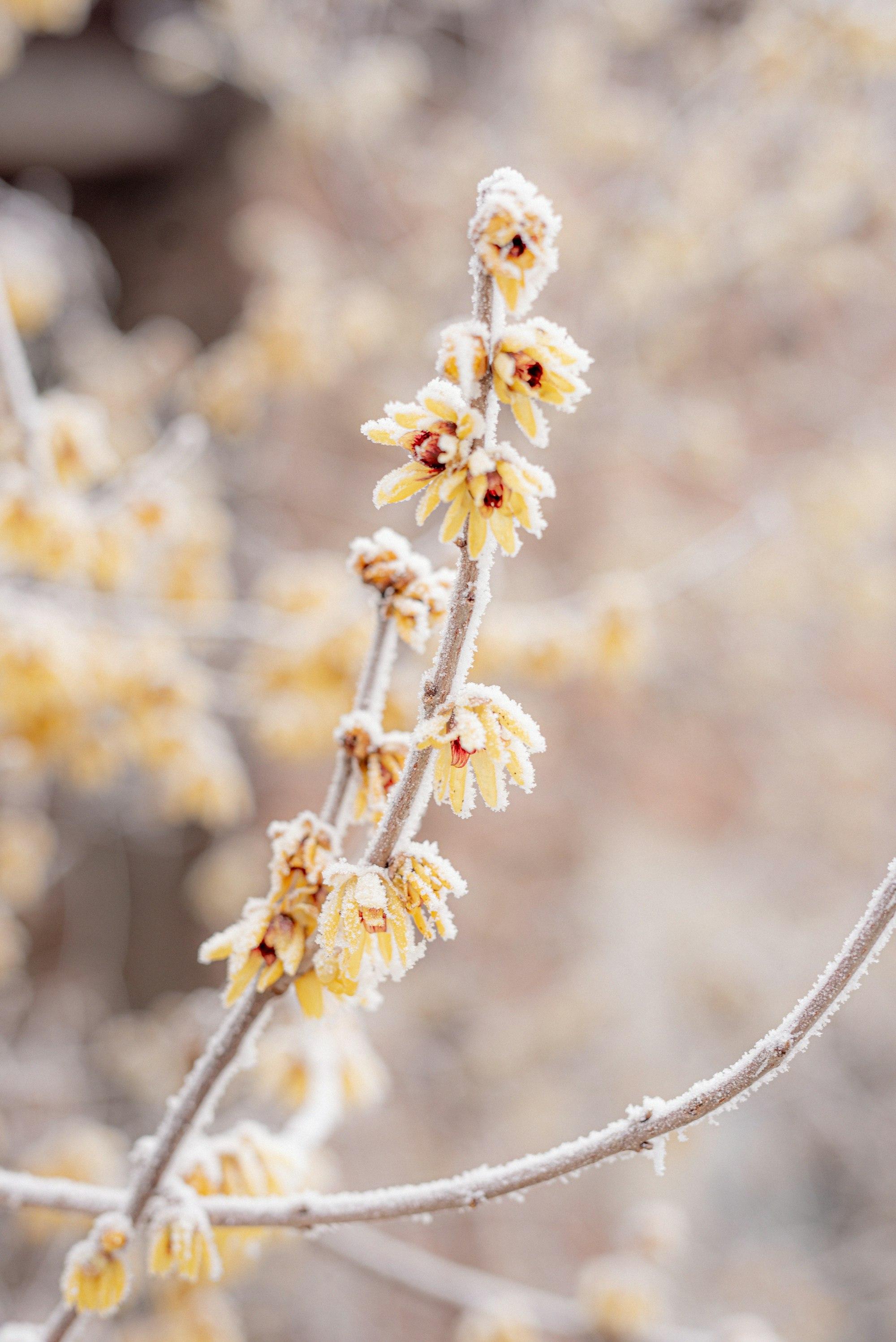Top Winter Flowers to Brighten Your Garden
Winter gardens burst with unexpected beauty as cold-hardy blooms defy the frost. From delicate snowdrops to vibrant camellias, these resilient flowers paint a colorful canvas against the stark winter landscape, bringing hope and cheer to even the chilliest days.

Photo by laura adai
Winter doesn't have to be a dull and dreary season for your garden. With the right selection of flowers, you can bring vibrant colors and fragrant scents to your outdoor space. In this article, we will explore some of the top winter flowers that are sure to brighten up your garden even on the coldest days.
Blooming Beauties for Winter Gardens
When it comes to winter flowers, grape hyacinth is a real showstopper. These small, bell-shaped flowers come in various shades of blue and purple, adding a touch of elegance to any garden. Growing grape hyacinth is relatively easy, as they are quite resilient and can thrive in a wide range of conditions.
If you're looking for a splash of color in the cold season, winter heath is an excellent choice. With its vibrant pink or purple flowers, this evergreen shrub is a true eye-catcher. Winter heath is also known for its ability to attract bees and other pollinators, making it an essential addition to any garden that aims to support wildlife.

For those who appreciate delicate and dainty flowers, scilla is a must-have for winter. These tiny blooms, often in shades of blue or white, create a carpet of color when planted in groups. Scilla flowers also have a subtle fragrance that adds to their charm.

Another fantastic addition to a winter garden is the hellebore, also known as the Christmas rose. Despite its name, hellebores are not actually roses but belong to the buttercup family. These elegant flowers bloom in shades of white, pink, purple, and green, often with speckles or veining that add to their allure. Hellebores are known for their long-lasting blooms, sometimes lasting for several months, providing a welcome burst of color during the dreary winter months.

Adding to the winter garden tapestry is the winter jasmine, a deciduous shrub that bursts into bright yellow blooms during the colder months. Winter jasmine is a vigorous grower, producing an abundance of star-shaped flowers that bring a cheerful vibe to any garden. This plant is also versatile, as it can be trained to climb walls or fences, adding vertical interest to the winter landscape.
Starflower: A Star in Your Winter Garden
If you're looking to add some exotic beauty to your garden, Algerian iris is an excellent choice. With its stunning yellow or purple flowers and sword-like leaves, this iris species will make a bold statement. Algerian iris is also a hardy plant that can withstand harsh winter conditions.
Algerian iris, also known as Iris unguicularis, is native to the Mediterranean region and is a member of the Iridaceae family. Its vibrant flowers not only add color to your garden but also attract pollinators like bees and butterflies. This perennial plant blooms in the winter months when most other plants are dormant, making it a valuable addition to any winter garden landscape.

Pansies and violas are popular choices for winter gardens, thanks to their cheerful and vibrant blooms. While they may look similar, there are a few differences between the two. Pansy flowers are larger and have a distinct "face" pattern, while violas have smaller, more delicate flowers. Whichever you choose, both will add a splash of color to your garden.
Violas, also known as "Johnny Jump-ups," are edible flowers that can be used to garnish salads or desserts. These versatile plants come in a wide range of colors, from deep purple to sunny yellow, adding not just visual appeal but also a touch of flavor to your dishes. Violas are easy to grow and can thrive in containers or garden beds, making them a popular choice for both beginner and experienced gardeners.
Snowdrops are often considered the first sign of spring, and their delicate white flowers can brighten up any winter garden. These petite beauties are known for their resilience and ability to withstand cold temperatures. Snowdrops are also great for naturalizing, as they will multiply over time and create a stunning display.

No winter garden is complete without daffodils. These sunny yellow flowers are a true symbol of spring and will bring a much-needed pop of color to your outdoor space. Daffodils are easy to grow and are available in various shapes and sizes, allowing you to create a diverse and eye-catching display.
Hellebores: Winter's Elegant Bloomers
When it comes to adding a festive touch to your winter garden, winterberry is a top choice. This deciduous holly shrub produces bright red berries that can last well into winter, adding a splash of color to your garden when most other plants have gone dormant.
Lily of the valley shrub is another great option for a fragrant and delightful winter flower. With its small, bell-shaped flowers and sweet fragrance, this shrub will create an enchanting atmosphere in your garden. Lily of the valley shrub is also easy to grow and requires minimal maintenance.

If you're looking for a cheerful winter flower, look no further than winter aconite. These bright yellow blooms are one of the first flowers to appear in late winter or early spring, signaling the end of the cold season. Winter aconite is also known for its ability to spread rapidly, creating a carpet of golden blooms.
Adding to the charm of winter gardens are the delicate blooms of snowdrops. These dainty flowers, with their drooping white petals and hint of green, are often considered a symbol of hope and renewal. Snowdrops typically bloom in late winter, peeking through the snow-covered ground, bringing a sense of anticipation for the coming spring.
For a touch of elegance and sophistication in your winter garden, consider planting camellias. These evergreen shrubs produce exquisite flowers in various colors, including shades of pink, red, and white. Camellias bloom in the cooler months, adding a pop of color and beauty to your outdoor space when most plants are dormant. With their glossy, dark green leaves and showy flowers, camellias are sure to be a standout feature in your winter garden.

Witch Hazel: Winter's Soothing Scent
When it comes to vibrant blooms for winter cheer, primrose is a top contender. These colorful flowers come in various shades, including yellow, pink, and purple, and can last for several weeks. Primrose is a versatile plant that can be grown in containers or borders, making it a great addition to any garden.
If you're looking for a showstopper, camellia is the flower for you. With its large, rose-like blooms in shades of white, pink, and red, camellias are sure to make a statement in your winter garden. These evergreen shrubs are also known for their glossy foliage, adding visual interest even when not in bloom.

With these top winter flowers in your garden, you can create a stunning display that will brighten up the coldest of days. Whether you choose vibrant blooms like pansies and camellias or delicate flowers like snowdrops and scilla, your garden will become a winter wonderland filled with color and fragrance. So don't let the winter blues get you down - embrace the beauty of these winter flowers and enjoy the magic they bring to your outdoor space.
One often overlooked winter flower that deserves more attention is the enchanting witch hazel. Known for its soothing scent and unique spidery blooms, witch hazel adds a touch of whimsy to any winter garden. The flowers of the witch hazel plant come in various shades of yellow, orange, and red, bringing warmth and vibrancy to the winter landscape.
Not only is witch hazel visually stunning, but it also has a long history of medicinal use. The extract from witch hazel bark and leaves is known for its astringent properties, making it a popular ingredient in skincare products. In addition to its skincare benefits, witch hazel is also used in traditional medicine to treat a variety of ailments, from sore throats to inflammation.
Check out the best deals on garden tools, planters, and outdoor decor to enhance your vibrant winter blooms and never overpay making your home beautiful!
Quick facts
What flowers can still bloom in the winter?
Flowers like pansies, hellebores, and winter jasmine can bloom in winter, bringing color and life to colder gardens.
What is a great flower for annual winter color?
Pansies are an excellent choice for annual winter color, thriving in cool temperatures and providing vibrant blooms.
What flowers like more shade than sun?
Hellebores and cyclamen prefer shady conditions, making them ideal for winter gardens with limited sunlight.
What is the first flower to bloom in the winter?
Hellebores, often called Christmas roses, are among the first flowers to bloom in winter, brightening gardens with their delicate petals.
What is a hardy winter flower?
Winter jasmine is a hardy flower that blooms in cold weather, providing bright yellow flowers even in harsh conditions.

Anirudh Atodaria
Software Engineer at Spoken
Anirudh is a software engineer at Spoken. He enjoys learning new things and solving complex problems. He takes pride in making others lives easier through innovative technology solutions. While he spends most of his time immersed in coding and tech, he tries to touch some grass occasionally.
Read more